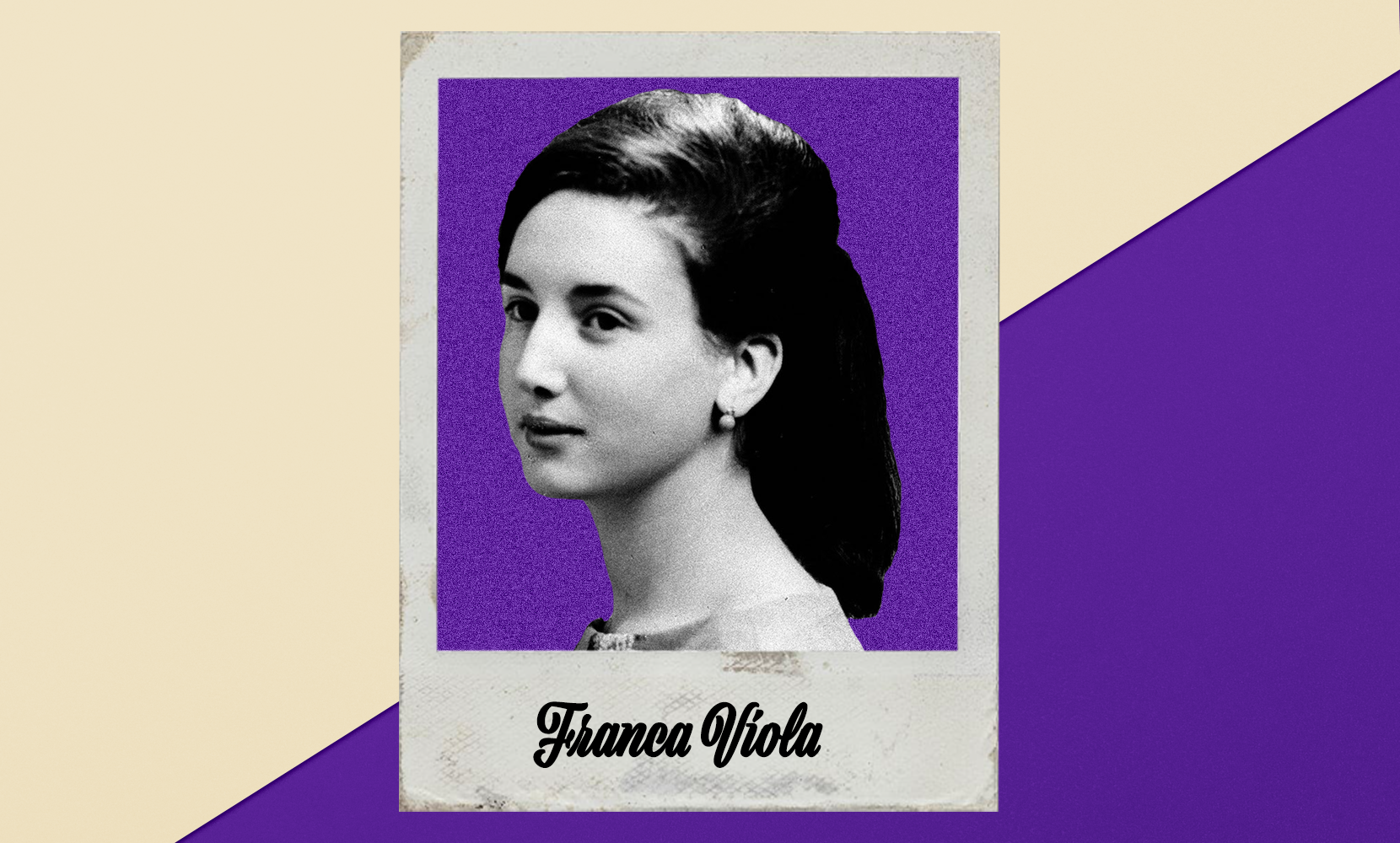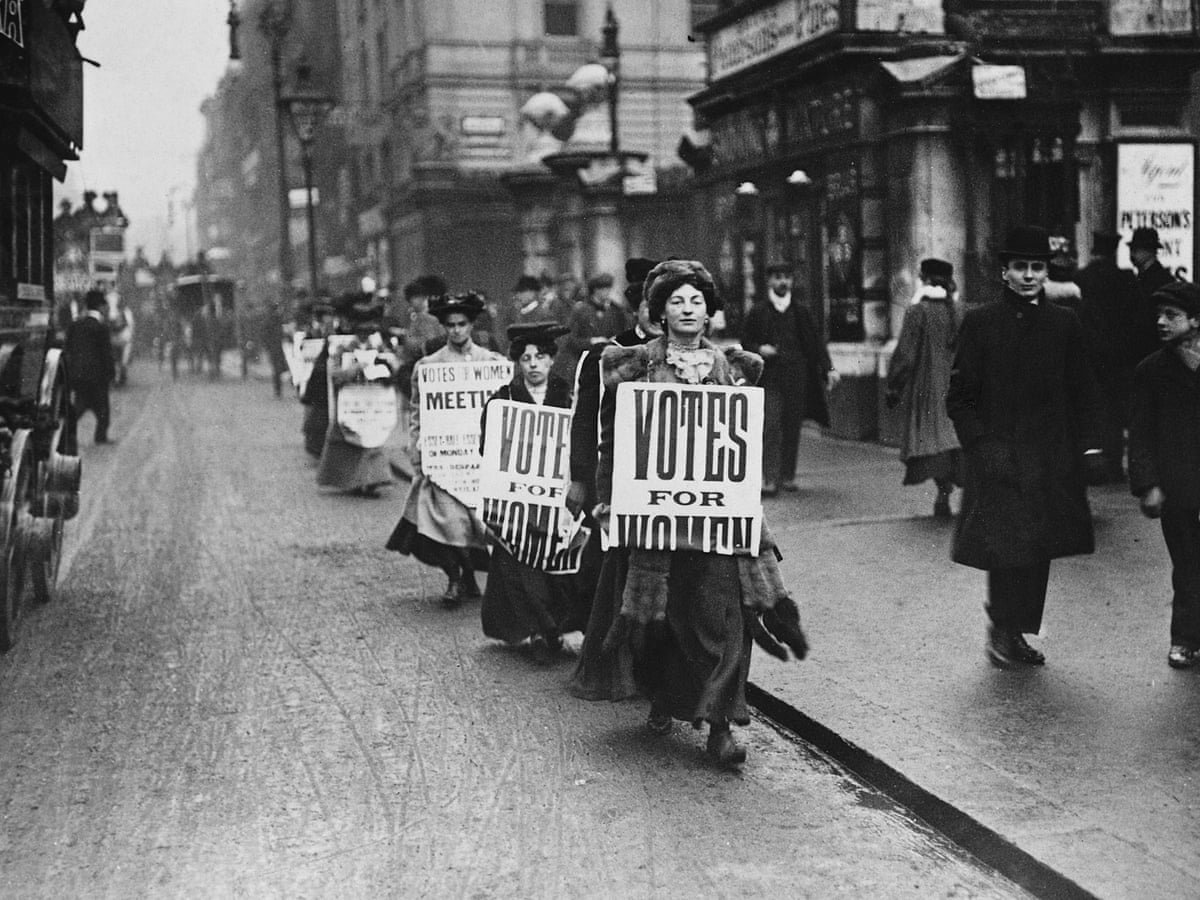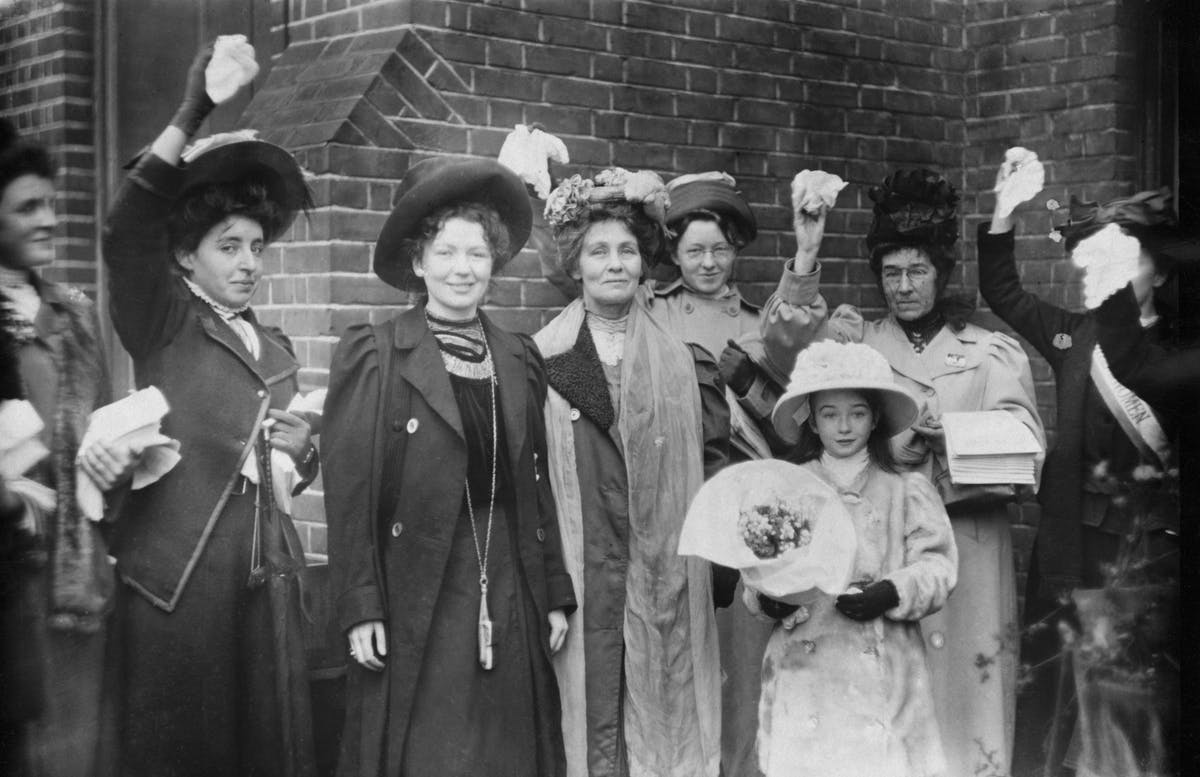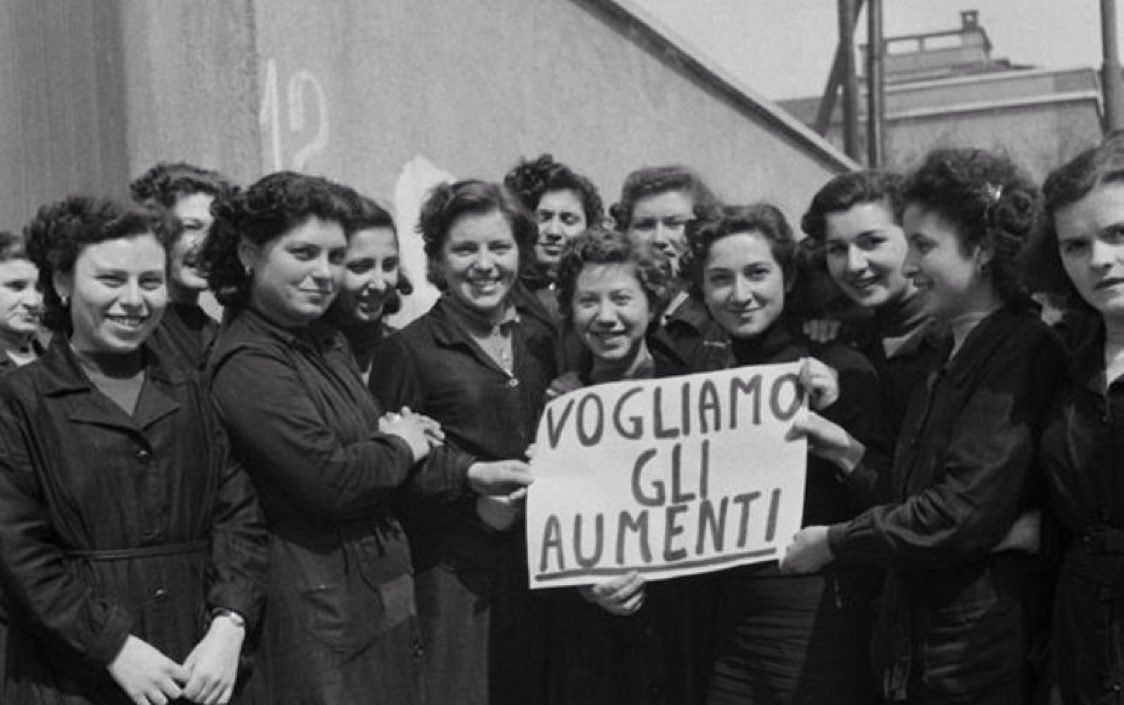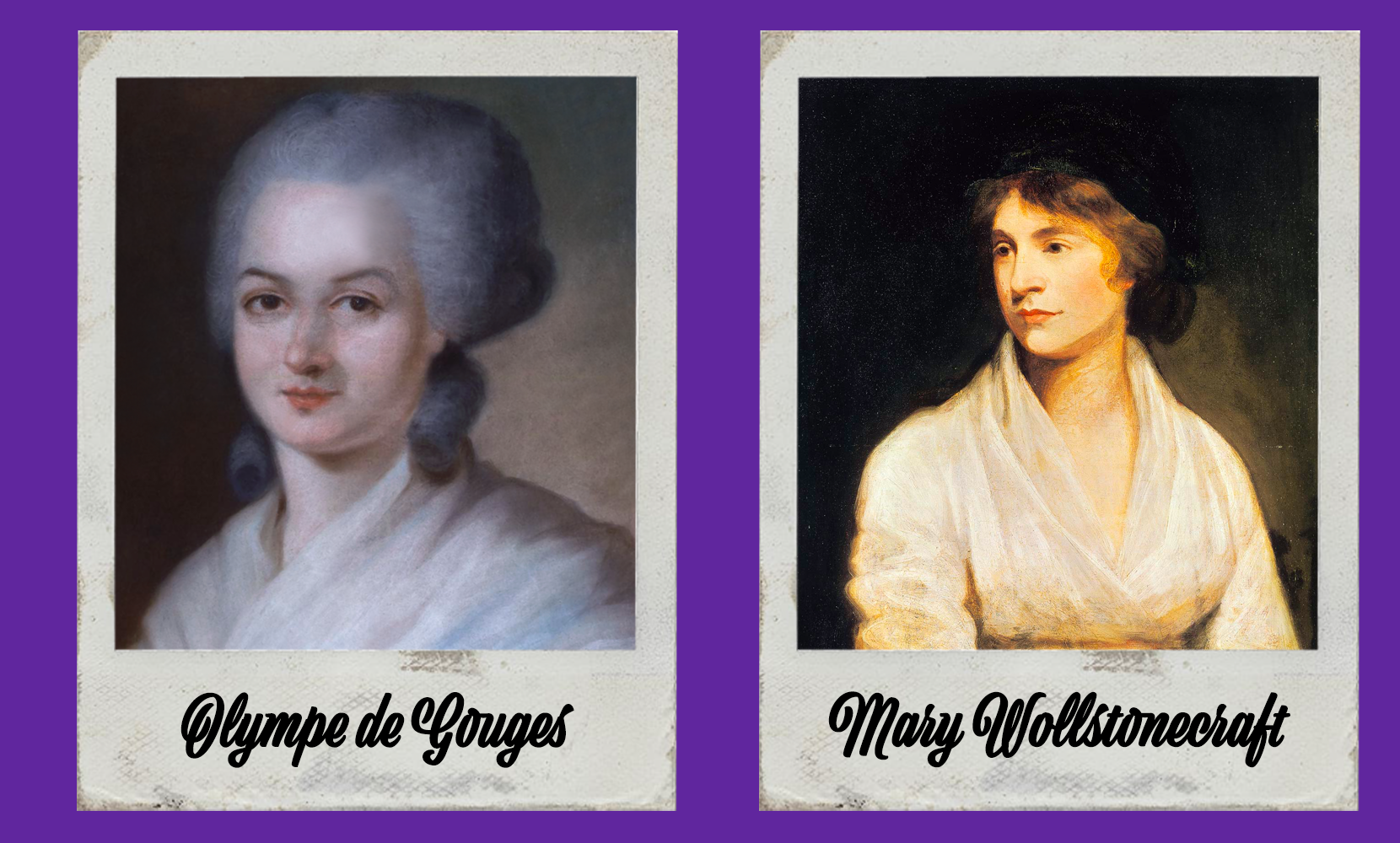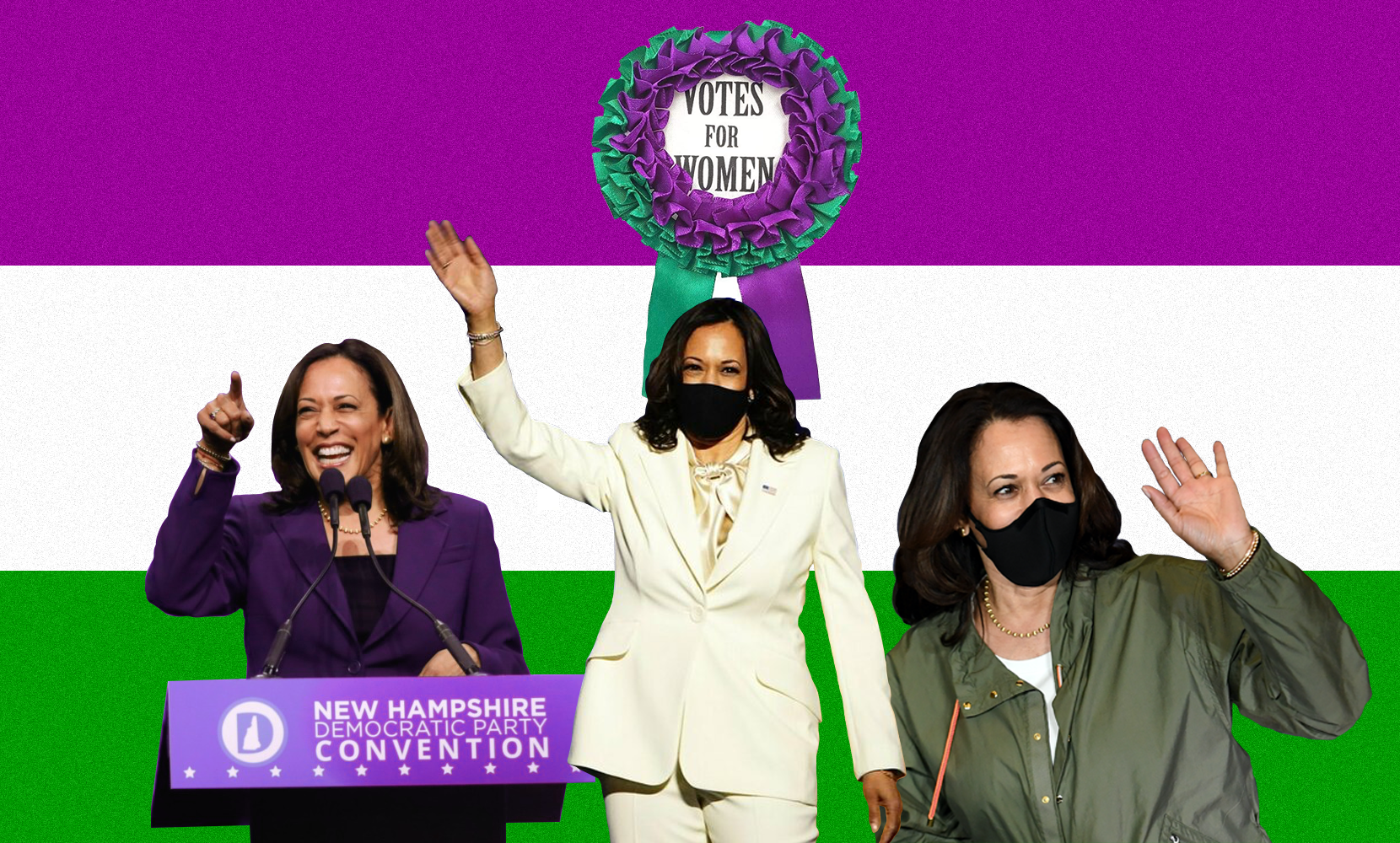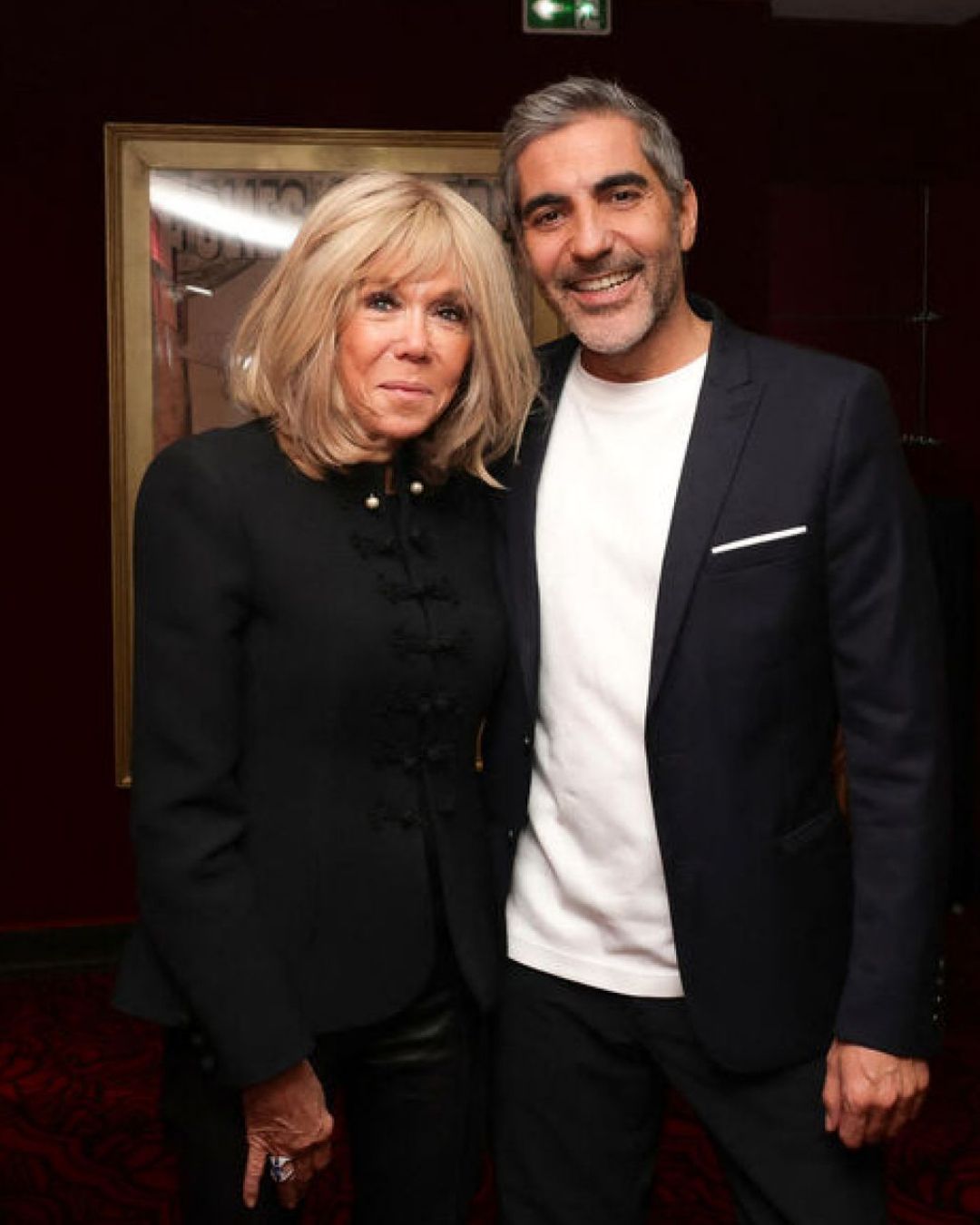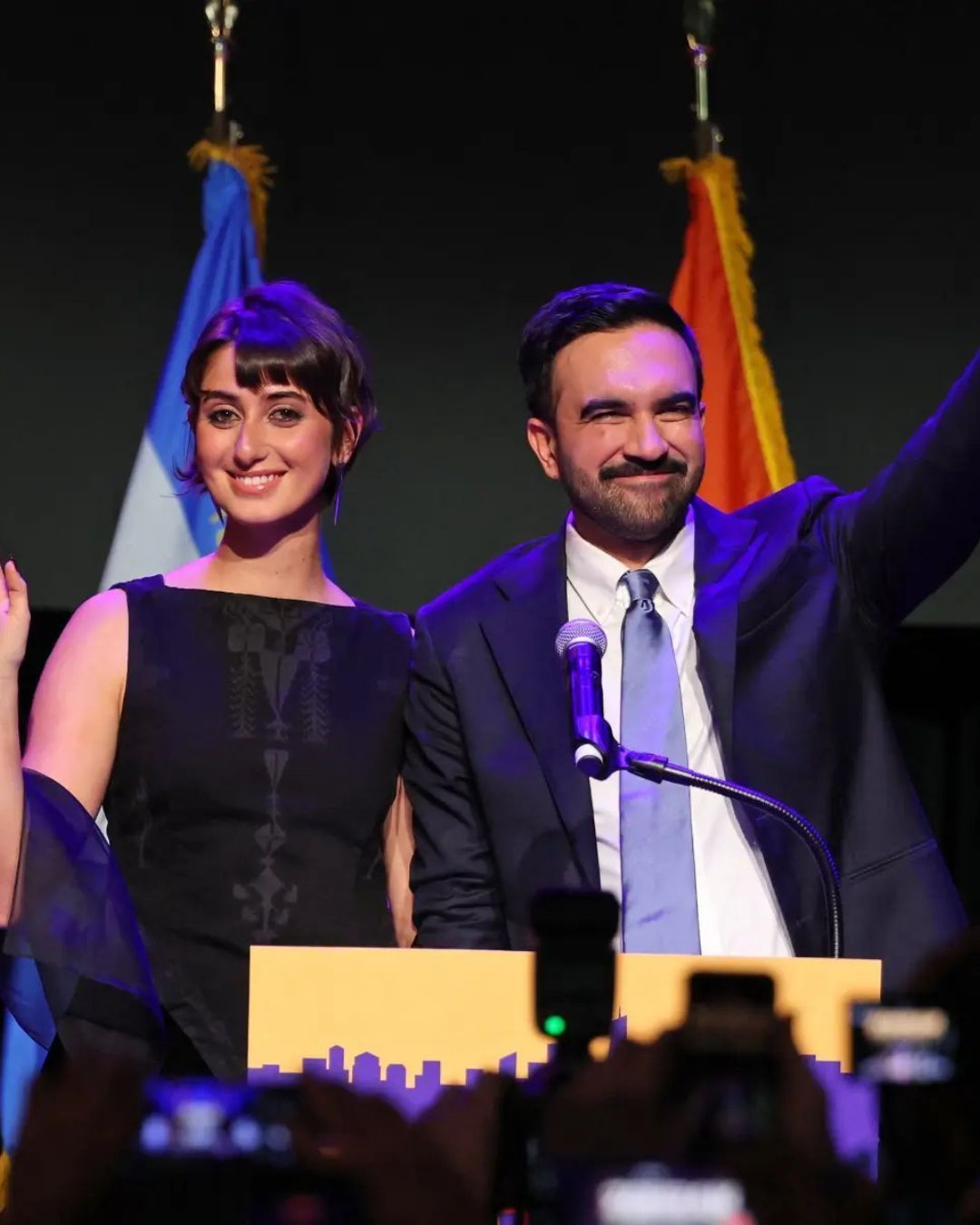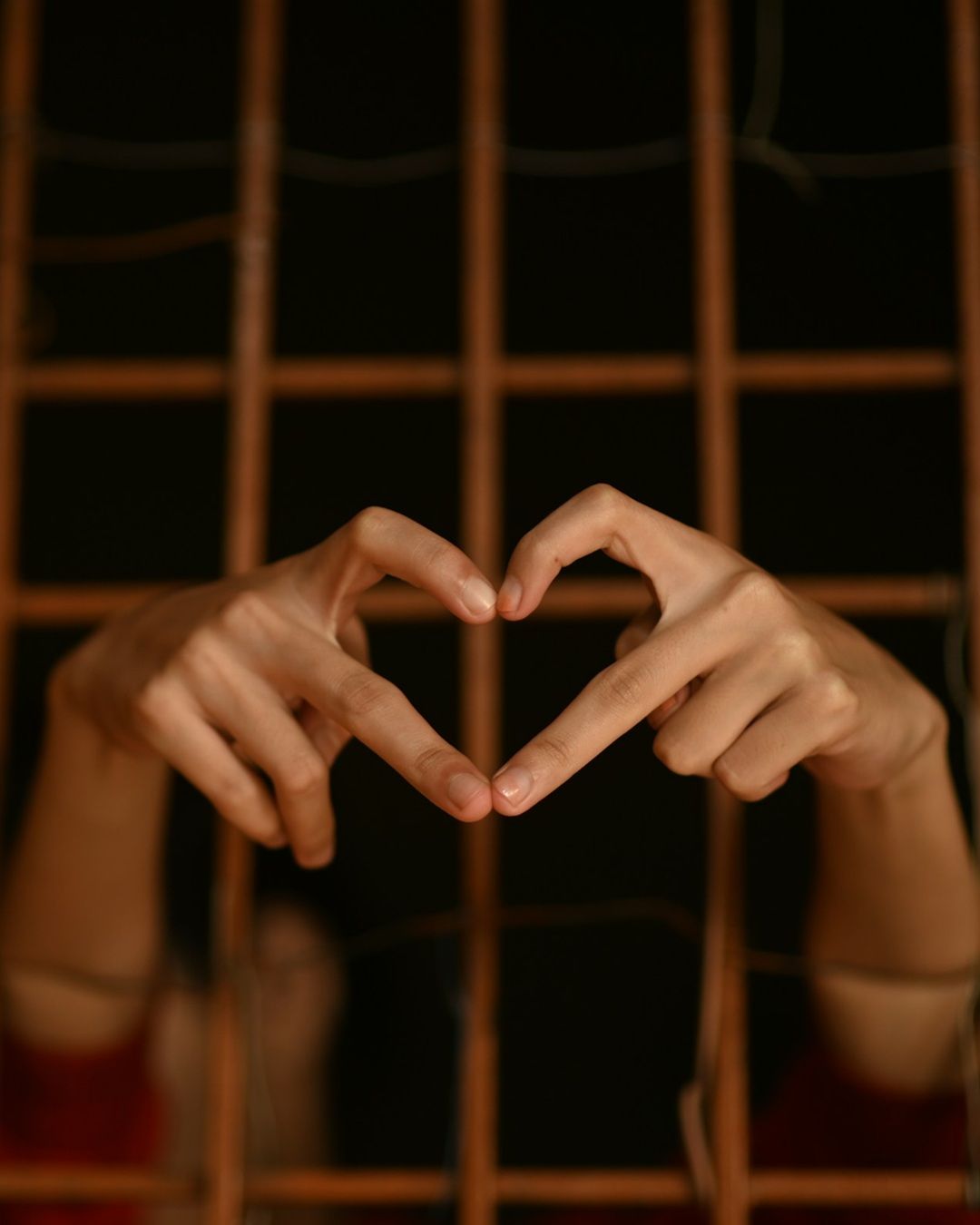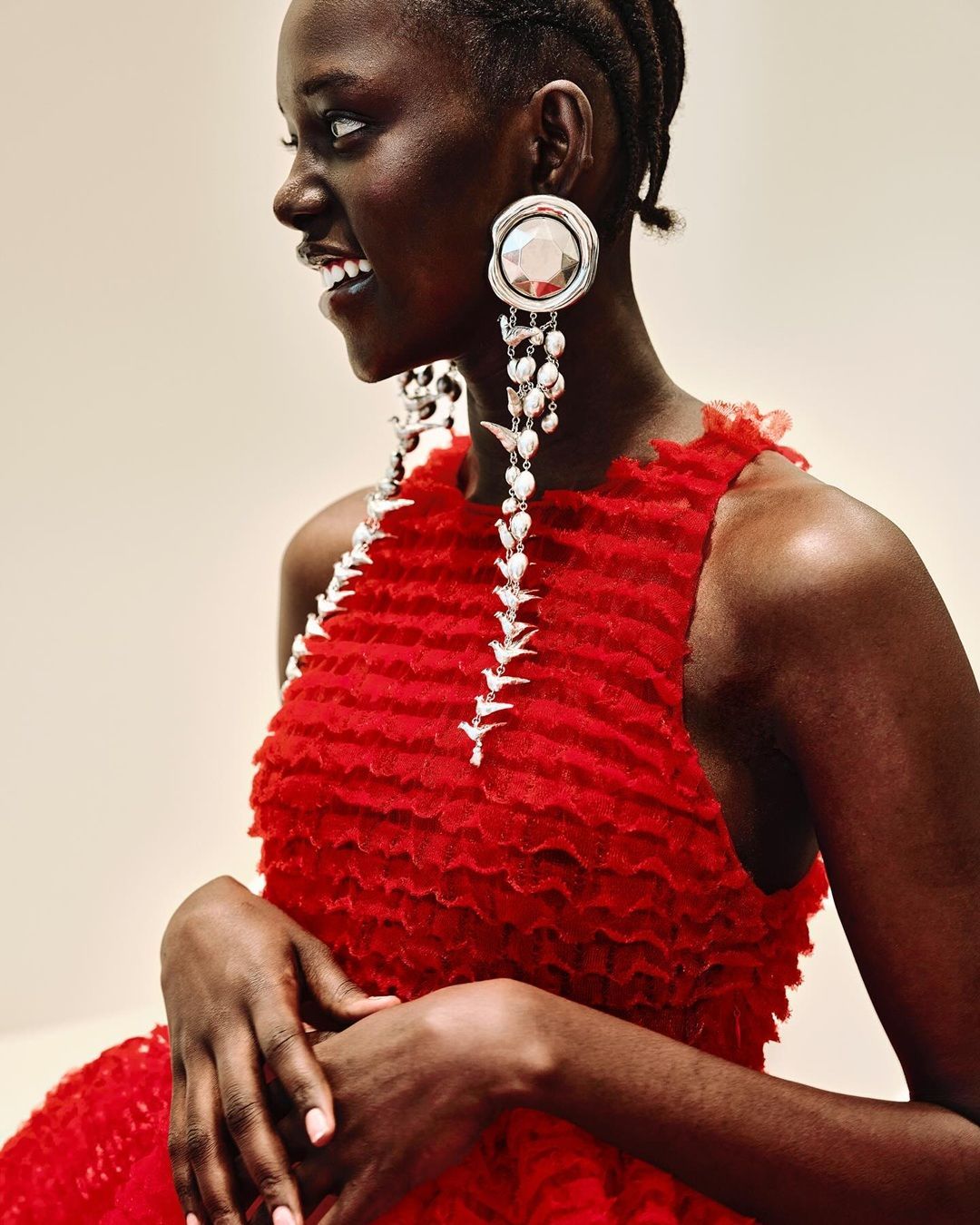
The history of the first feminist wave From Suffragettes to Italian fascism
We’ve recently talked about Kamala Harris' white suit, the new Vice President of the United States, worn as a tribute to the suffragettes. But did the suffragettes only wear white? Yes and no. The photographs of the early twentieth century were of course in black and white, and this certainly gave prominence to white (also in contrast to the multitude of men dressed in black who watched them march), excluding however equally important colours for the movement: yellow, green and purple.
Purple represented “loyalty” while yellow (or gold) was a reference to Kansas sunflowers (the state where Susan B. Anthony and Elizabeth Cady Stanton - milestones of early American feminism - ran numerous campaigns). In the UK, yellow has been replaced with green, a symbol of “hope”. Thus in 1908, the three shades (purple, green and white) became the official colours of the campaign of the Women's Social and Political Union (WSPU), soon becoming the emblem of the movement for women's suffrage in general. From that moment on suffragettes often wore purple and green (or gold in the United States) as a sash, or accessories, over head-to-toe white outfits. In the shared imagination, white is associated with purity and virtue. Instead of breaking with tradition, suffragettes have appropriated stereotyped visual indicators of femininity for their own cause. Wearing white also served as a defence against criticism from those who saw them as too intimidating, masculine, or sexually deviant because they were challenging the status quo. White was an accessible colour to anyone who wanted to join the cause and created a democratic uniform, which allowed it to be worn regardless of one's economic status.
Who pioneered the first wave?
What we call today the "first feminist wave" is the result of a series of movements (the French Revolution is the first) and philosophies, such as the Enlightenment, which have imbued the culture of Western countries since the 18th century. The first one to use this expression was the journalist Martha Weinman Lear, in March 1968 in The New York Times. She coined "first wave" to distinguish events and struggles contemporary to her (those, in fact, of "second wave"), from the women's movement (not all of them consciously defined themselves feminists) that developed from the first half of the 19th century at the beginning of the 20th century. The objectives of the first wave were essential - but not limited to - three: obtaining women's suffrage (the right to vote), the right to work in sustainable conditions and a better women's education. In the United States, it has been established that the "first wave" refers to the period between the Seneca Falls conference (1848) and the achievement of women’s suffrage in 1920 (which, however, it should be remembered, excluded Native American women). Seneca Falls was the first American convention to discuss the social, political and religious status and rights of women.
We can say that in this period women have mainly moved to achieve legal and social equality, personal freedoms and political rights. In short, they fought against the so-called de jure inequalities. But each Country had a different cultural background and social context, so it was not possible to create a global movement aligned right away (also and above all because of colonialism). As Carla Ravaioli, Italian journalist and politician had pointed out, feminism has a distant history, but up until a given moment, it was only isolated episodes, which cannot be considered as sensitive social phenomena with an impact on reality. But it is precisely these events and sporadic personalities that have led to the spread of a common feeling. There are at least two figures to remember: Olympe de Gouges and Mary Wollstonecraft.
As for the first, her real name was Marie Gouze, a French playwright and activist in the mid-eighteenth century. In the cultural clubs of the time, the emancipation of French society and the role that women should have had within it were often discussed. Jean-Jacques Rousseau's political theory, however, excluded women. And so, after the publication of the Declaration of the Rights of Man and Citizen (1789), Olympe de Gouges, in 1791, wrote the Declaration of the Rights of Woman and Citizen, with which she demanded the full legal, political and social assimilation of women. In the first article of the Declaration, it is written that women are born free and have the same rights as men. From here the step to the guillotine was short and any opening to the claims of those years fell with Napoleon, who immediately relegated women to a secondary position, always subject to a male "guardian" (first the father, then the husband). In the year following De Gouges’ Declaration, Mary Wollstonecraft published A Vindication of the Rights of Woman: with Strictures on Political and Moral Subjects (1792). Wollstonecraft is often remembered only as the wife of philosopher William Goldwin, and mother of Mary Shelley, author of Frankenstein, but her contribution to early English feminism was essential. The essay highlights the active role of women in society, especially in domestic care-work. Wollstonecraft writes that women are not inferior by nature, but are considered as such because the different education reserved for them in society places them in a condition of inferiority and subordination.
“Work ennobles...”
Flora Tristan was another proto-feminist who, in 1843, published a small booklet entitled On the emancipation of women and the abolition of divorce, focusing on the category of the foreigner, but in which, above all, she linked the woman figure to that of the worker and to all the underprivileged people. In this way, gender discourse has begun, but also a class one. The big claims arose with the Industrial Revolution, so the first countries involved were the United Kingdom, France and the United States. It is precise with the Industrial Revolution that women have been called out of the private sphere, to enter the social market of extra-domestic work.
Previously, in traditional patriarchal structures, the family was the centre of production, and the woman had a specific function, in the private sector, subordinated to the male public power. Work, particularly in factories, is what allowed women to physically break into the public sphere for the first time. Thus, it was thanks to the Second Industrial Revolution of the late nineteenth century that women became aware of the numerous inequalities they were suffering. In this first phase of Feminism, there was a strong intersection between the workers' movements and the demands of women (in the United States there was also a link with the anti-slavery movement), because both categories were united by a condition of subordination. Anna Kulišëva, Italianized Kuliscioff, journalist and revolutionary, who also contributed to founding the Italian Socialist Party, took care of this association. For Kuliscioff, equal wages (ie the same pay for jobs of equal value regardless of gender) and the improvement of working conditions were the starting point for solving the "women's question”. Already in 1866, during the congress of the Second International, most of the representatives had condemned the right to work for women. It was thought to be a principle of racial degeneration and one of the agents of moral degradation, used by the capitalists to weaken the moral fibre of the people. So, in essence, if on the one hand women were exploited in the working environment of the "right", the "left" asked that they return to being exploited only in the domestic environment (because, let's remember, domestic work is a job that should be paid!).
In the opening words of "The monopoly of man", Kuliscioff writes: "How is it possible to isolate the question of women from so many other social problems, all of which have their origin in injustice, which all have as their basis the privilege of one sex or of a class?" Here too we see the urgency of the labour and economic question in the claims of the first wave. Because, taking up Muzzarelli's words in the premise of Women and work: a difficult identity, "work confers identity and allows changes and social ascents by modifying individual and family status". But this possibility of relationships (and fulfilment) was long denied to women because it interfered with their role as women and mothers. So, recovering the proverbial phrase attributed to Charles Darwin, work ennobles man but certainly not women. And this is certainly valid for those years, but even today, in 2020 wage parity has not yet been achieved, but a gender pay gap still exists: women earn 81 cents for every dollar earned by men (PayScale Report).
Suffragettes and the right to vote
Once they entered the public space, women also had more strength to claim the right to take part in public decisions, or better to vote. Those who asked for suffrage for women were the suffragettes. "Suffragette" would actually be derogatory, one of those terms of hatred that was later claimed with pride by some British women belonging to the women's emancipation movement born to obtain the right to vote for women. In the United States, however, there was no such reappropriation, and it was preferred to use suffragists. There in the US, the first woman to ask for the right to vote was Margaret Brent, in 1647, with negative results.
In the beginning, we talked about the colours of the WSPU, the social and political union of women. It was within this reality that women carried out a real political militancy, under the leadership of the Pankhurst family. The association was founded in 1903 by Emmeline Pankhurst, after the death of her husband, with her two daughters Christabel and Sylvia. The group's main slogan was Deeds, not words!. And, in fact, the components of the movement organized protests, hunger strikes and other operations that also included violence. One of the events that most struck public opinion occurred in 1913. Suffragette Emily Davison threw herself, dying, under the horse of King George V, during a race at the Epsom Derby. This episode, like the whole British suffragette movement, is told in Suffragette (2015), a British historical drama film directed by Sarah Gavron. Spoiler: full suffrage in the UK was obtained in 1928.
The first Country to grant the right to vote for women was New Zealand, in 1893. Instead, the most recent recognition is from the Kingdom of Saudi Arabia, in 2011, although women could not actually vote until 2015. In Brunei, the right to vote is still forbidden to women, but also to men, since 1962, except for local elections. There is still a State in which women cannot participate in elections: the Vatican State.
In Italy, women's suffrage was approved in 1920 in the Parlament, but the Senate was unable to confirm it due to the dissolution of Parliament. Therefore full suffrage was obtained in 1945, at the end of the Second World War, after a great devaluation of the figure of the woman during the Fascist period. In one of his speeches, Mussolini had stated: "women must obey. My opinion of her part in the State is in opposition to all kind of feminism. Of course, she doesn't have to be a slave, but if I gave her the right to vote people would laugh at me. In our State, she must not count."
Wife and mother
With Fascism, in Italy, women were once again confined to domestic life, always in a secondary position compared to men. Even Ferdinando Loffredo, economist and philosopher of the Regime, openly argued that the woman should return to the absolute subjection of the man - father or husband. Subjection and therefore spiritual, cultural, economic inferiority. In these years a wife owed eternal fidelity to her husband even in the event of separation (while the opposite did not happen). In 1938 Loffredo also wrote in Family Policy that: "female work [...] creates two damages at the same time: the masculinization of women and the increase in male unemployment. The working woman is on her way to sterility; loses the trust of man; she contributes more and more to raise the standard of living of the various social classes; and considers motherhood as an impediment, an obstacle, a chain; [...] she contributes to the corruption of customs; in short, she pollutes the life of the lineage." Working women were viewed with suspicion because the only real duty women had was "to procreate for the Nation”.
The male-dominated public control of the private life of women in Italy reached its peak with the honour killing (or shame killing). In the Rocco Code, edited by the Minister of Grace and Justice Alfredo Rocco, article 587 provided for the reduction of a third of the sentence for anyone who kills his wife, daughter or sister to defend his own honour or that of the family. This meant that if a woman betrayed her husband and the latter, in a fit of anger, killed her, he could appeal to the honour killing. The “remedial marriage” comes from the same mentality. In this case, after a rape, the crime was extinguished if the rapist agreed to marry the victim, saving the honour of the family as previously. The overcoming of these positions is still quite recent. Provisions on honour killing, such as remedial marriage, were repealed in Italy in 1981, just forty years ago. The first woman to rebel against remedial marriage in Italy was Franca Viola in 1966, refusing to marry her rapist. And so, with her too, a new chapter of feminist protests in Italy was inaugurated. The first women's emancipation movement fought to eliminate de jure inequalities and paved the way for subsequent claims for de facto discrimina.
Perhaps we have not strayed even so far if a victim of revenge porn (or rather of non-consensual sharing of intimate material) is still fired today, while the person who actually committed the crime does not suffer any kind of sentence, if not a year socially useful work.
Tips:
In addition to the texts and films already mentioned in the article, to get an idea of the period and the struggles we recommend:
- The female question, a documentary in ten episodes aired in 1976 on the National Program and now available on RaiPlay;
A Room of His Own, Virginia Wolf (1929);
Cable Girls, TV series on Netflix (2017)
Miss Frimans' War, tv series (2013)




















































